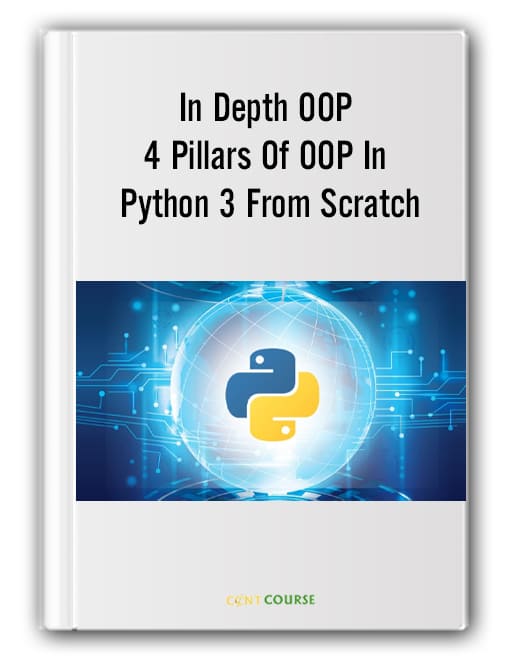StrPython OOP: Four Pillars of OOP in Python 3 for Beginners – Febin George
Python OOP: Four Pillars of OOP in Python 3 for Beginners has everything you need when it comes to OOP and paves the way to advanced levels.
Categories: IT & Software, Free Download
Python OOP: Four Pillars of OOP in Python 3 for Beginners Description
As the growth of Data Science consistently increases and reaches new spikes, the demand for Python developers also soars, which consequently requires developers to become more competitive to stand out from the rest. That is also the target of Python OOP: Four Pillars of OOP in Python 3 for Beginners as the course aims to push your abilities to the limit and makes you easier to spot among the usual Python programmer crowd.
Here are what you will learn in this course:
- Introduction and Course Structure
- Introduction
- Installation of Python (if you haven’t already)
- Installation for Windows
- Installation for Mac
- Installation for Linux
- Classes and Objects
- Understanding Classes and Objects
- Implementation of Classes and Objects in Python
- Attributes and Methods
- Class Attributes and Instance Attributes
- Understanding the ‘self ‘ parameter
- Static Methods and Instance Methods
- init() method – Create a fully initialized object
- Abstraction and Encapsulation – The first two pillars of OOP
- Abstraction and Encapsulation
- Performing Abstraction and Encapsulation in Python
- Inheritance – The third pillar of OOP
- Understanding Inheritance and Performing a Single Inheritance in Python
- Performing a Multiple Inheritance in Python
- Performing a Multilevel Inheritance in Python
- Public, Protected, and Private – Naming Conventions in Python
- Polymorphism – The final pillar of OOP
- Overriding and the super() method
- The Diamond Shape Problem in Multiple Inheritance
- Overloading an Operator
- Implementing an Abstract Base Class (ABC)
- Final Project – Simulate a Banking System
- Problem Statement
- Project Solution – Part 1
- Project Solution – Part 2
- Congratulations!
Related products
Free Download
Free Download
Free Download
Free Download











